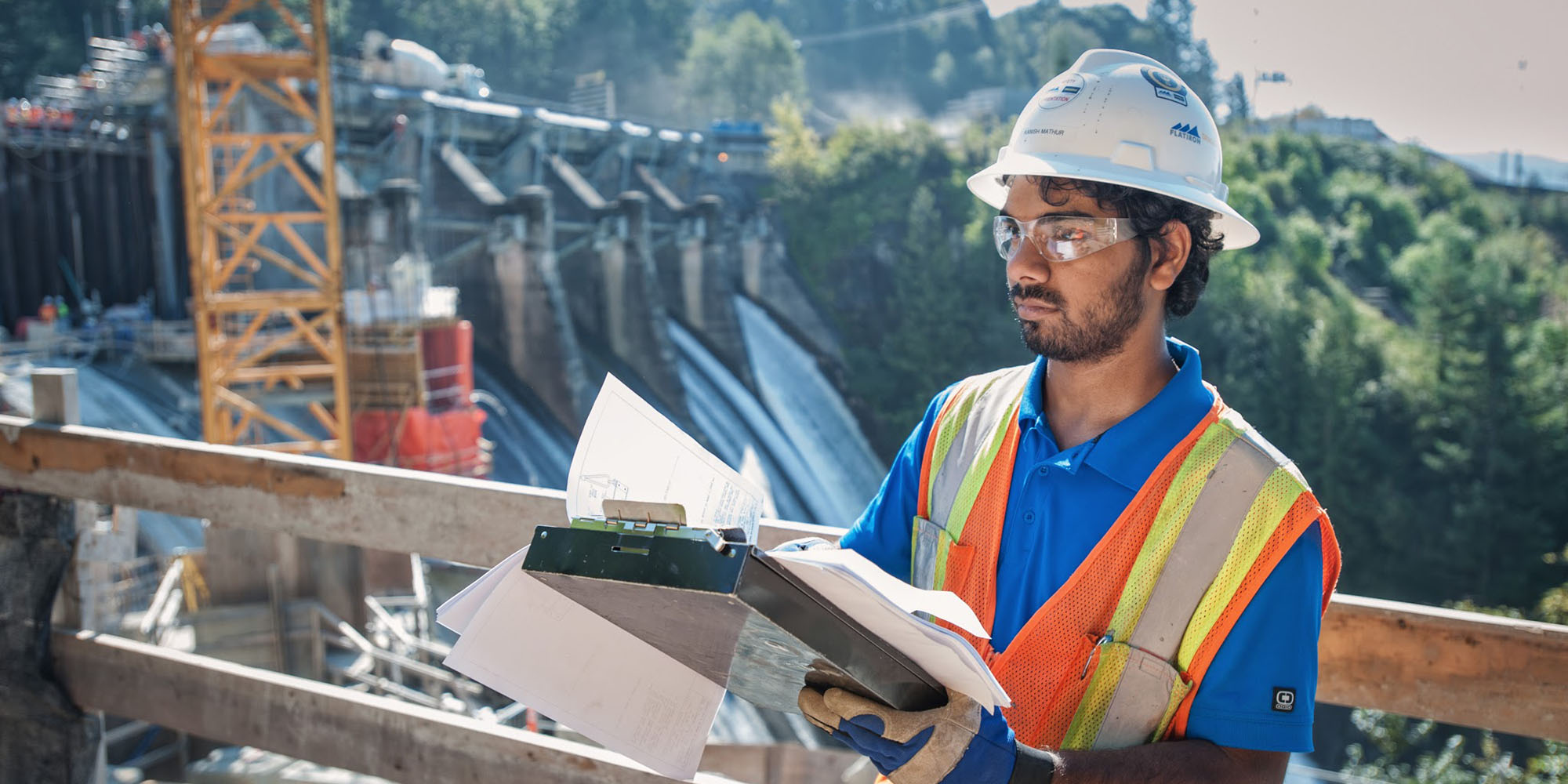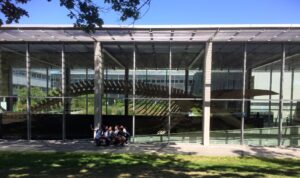UBC Engineering’s world-class faculty and researchers are committed to an instructional approach that is varied, experiential and engaging. This multi-faceted approach makes UBC engineers stand apart, on a firm foundation from which to build an exciting and rewarding career.
What you might expect/course format
While each course varies based on the subject and instructor, our VSP Packages feature:
- Interactive in person lectures
- Hands-on labs, fun and practical demonstrations
- Team-based assignments
- Fun social activities
- Tours of industrial facilities (some programs)
- Experience with industry standard software
July 2026 Course Packages
Digital Design and Simulation for Civil Engineers
This course introduces students to modern software tools that civil engineers use to design, analyze, and communicate infrastructure projects. Working in a computer lab, students gain hands-on experience with industry-relevant programs for computer-aided drawing, modelling, and visualization. Through guided tutorials and mini-projects, they learn how to create and edit engineering drawings, build simple structural and infrastructure models, and present results in clear graphical form.
Examples may include software commonly used in civil engineering practice for drafting, 2D/3D modelling, and simulation. Applications span several areas of civil engineering, such as buildings and bridges, transportation systems, and municipal infrastructure. Emphasis is placed on good digital workflow habits: organizing project files, managing versions, documenting assumptions, and preparing figures and diagrams suitable for technical communication.
By the end of the course, students will be able to use modern civil engineering software to represent infrastructure concepts, perform basic analyses, and prepare professional-looking outputs that support design decisions and reports.
Applied Civil Engineering Projects with Software Tools
This course builds on the digital skills from Course 1 and focuses on applying civil engineering software to realistic, integrated projects. Working primarily in a computer lab, students complete a series of hands-on design and analysis tasks that mirror aspects of professional practice. Depending on instructor preference, projects may involve structural modeling, basic finite-element analysis, transportation planning and traffic simulation, or infrastructure data analysis and visualization.
Students work individually and in small teams to set up models, run analyses, interpret results, and present their findings. They are introduced to the strengths and limitations of different software tools and learn how to select appropriate tools for a given engineering problem. The course also emphasizes practical skills such as documenting assumptions, checking results for reasonableness, and communicating outcomes with clear figures, tables, and short technical summaries.
By the end of the course, students will have completed several small but concrete civil engineering projects using modern software, gaining confidence in using digital tools to explore and solve real-world infrastructure problems.
Prerequisites: Preferred background in engineering or a related discipline, but not required. The package is open to both undergraduate and graduate applicants. Due to the technical components, students should be comfortable with high-school–level trigonometry. Familiarity with basic programming is an asset, but not mandatory.
Sustainable Structural Materials and Low-Carbon Concrete Technologies
This course introduces students to the structural materials that shape modern infrastructure—especially concrete, steel, and emerging sustainable alternatives—while emphasizing strategies for reducing embodied carbon and improving long-term performance. Students explore the properties and behavior of structural materials within the broader context of climate change, durability demands, and global movements toward greener construction practices.
Topics include low-carbon concrete technologies, high-performance mixes, supplementary cementitious materials, recycled aggregates, and innovative materials that support carbon-neutrality goals. The course also highlights how material selection influences structural behavior, service life, and environmental impact.
Whenever feasible, the course includes a site visit to an active construction project or materials facility, giving students a real-world perspective on how sustainable materials and practices are being adopted locally. By the end of the course, students understand how the next generation of structural materials can support safer, more resilient, and climate-responsive infrastructure while meeting the performance demands of civil engineering practice.
Laboratory Testing and Performance Evaluation of Structural Materials
This hands-on, laboratory-focused course allows students to directly test and evaluate the behavior of key structural materials used in civil engineering. Working in UBC’s world-class structural and materials laboratories, students perform experiments that investigate mechanical properties such as strength, stiffness, ductility, and failure behavior using advanced testing equipment and instrumentation.
Laboratory activities may include testing of concrete cylinders, aggregates, reinforcing steel, fiber-reinforced mixes, and sustainable or low-carbon material alternatives. Students learn proper specimen preparation, instrumentation, data collection, and interpretation of test results, gaining real experience with equipment commonly used in material performance evaluation.
The course emphasizes the connection between laboratory data and real engineering decisions: how structural materials behave under load, how codes and standards are informed by testing, and how material innovations support sustainability and resilience goals. To complement the lab work, students may also participate in a site visit to observe material testing or construction applications in practice, reinforcing how laboratory insights translate into the built environment. By the end of the course, students gain a deep appreciation of structural materials and hands-on experience that is rare in short-term study programs.
Prerequisites: Preferred background in engineering or a related discipline, but not required. The package is open to both undergraduate and graduate applicants. Due to the technical components, students should be comfortable with high-school–level trigonometry. Familiarity with basic programming is an asset, but not mandatory.
Understanding Structural Behavior in Modern Cities
This course introduces students to how buildings and other structures behave under everyday loads and environmental forces. Using simple examples and real case studies, students learn the basic ideas behind load paths, support systems, structural stability, and why certain structural forms are chosen in urban environments.
Topics include how gravity, wind, and earthquakes affect structures; common failure modes; and practical strategies for improving safety and resilience. The course highlights the role of engineers in designing safer communities, especially in earthquake-prone regions like Vancouver.
Whenever possible, the course includes a field visit to a local structural or seismic retrofit project so students can observe real engineering challenges and solutions. The emphasis is on intuitive understanding rather than advanced calculations. By the end of the course, students will be able to identify common structural systems, recognize factors that influence performance, and appreciate the importance of resilience-focused design in growing cities.
Introduction to Earthquake Design and the Shake Table Challenge
This practical lab-based course introduces students to the basic principles of earthquake engineering and how structures respond to shaking. Rather than focusing on complex calculations, the course emphasizes core ideas such as mass, stiffness, flexibility, and how these influence building behavior during an earthquake.
Working in teams, students design and build simple structural models using accessible materials. They then test their models on a state-of-the-art shake table, observing how different design choices affect performance. The design–build–shake activity encourages creativity, teamwork, and problem-solving while reinforcing foundational engineering concepts.
In addition, students will visit and complete hands-on activities in UBC’s structural engineering laboratories, experiencing firsthand the equipment and methods used to test materials and structural components. This exposure gives students an authentic look into modern engineering practice. By the end of the course, students will understand the fundamental ideas behind seismic safety, recognize what makes structures more or less vulnerable, and gain meaningful hands-on experience applying engineering thinking to a real-world challenge.
Prerequisites: Preferred background in engineering or a related discipline, but not required. The package is open to both undergraduate and graduate applicants. Due to the technical components, students should be comfortable with high-school–level trigonometry. Familiarity with basic programming is an asset, but not mandatory.
Designing Engineering Interventions for Social Good
This course introduces students to the process of designing engineering interventions that respond to community-identified challenges. Students learn the fundamentals of user-centered design, prototyping, and evaluating the social, environmental, and ethical consequences of engineering solutions. Through hands-on activities, students develop their ability to design with—not for—communities, producing interventions that are feasible, equitable, and grounded in real-world needs.
Introduction to Social Entrepreneurship Business Models
Engineers are increasingly the creators, movers, and shakers shaping the world toward climate resilience, environmental justice, and sustainable development. This course provides an overview of social entrepreneurship and the business models that sustain mission-driven engineering solutions. Students examine how social enterprises balance financial viability with social and environmental impact, exploring concepts such as value propositions, stakeholder mapping, revenue structures, and impact measurement. By the end of the course, students will understand how engineering innovations can be translated into practical, sustainable ventures that advance the public good.
Prerequisites: Preferred background in engineering or a related discipline, but not required. The package is open to both undergraduate and graduate applicants. Basic high school math, science, and writing skills are needed.
Introduction to Community-Engaged Research
In a rapidly changing world where engineering solutions must address complex social and environmental challenges, engineers who can work collaboratively with communities is becoming an essential professional skill. This course introduces students to the theory and practice of community-engaged engineering, with a focus on integrating principles of Community-Based Participatory Action Research (CBPAR) into civil and environmental engineering contexts. Students will explore how to center equity, reciprocity, and community knowledge in engineering design and decision-making. The course emphasizes qualitative and quantitative methods, including interviews, surveys, focus groups, participatory mapping, and the integration of community data into technical analyses. Innovative and participatory approaches will be practiced so that students gain advanced skills increasingly expected of engineers working on complex challenges in vulnerable and historically marginalized communities.
Developing a Community-Engaged Research Project
Through a hands-on project, students will develop a community-engaged research plan that demonstrates how engineering solutions can be co-designed with communities to address complex socio-environmental challenges. Students will apply justice-centered frameworks, systems thinking, and qualitative methods to shape an ethical, participatory approach to engineering practice. Guest lectures from Indigenous scholars, community organizations, and practicing engineers will deepen students’ understanding of structural inequities, procedural justice, and the responsibilities engineers hold in advancing social and environmental justice. The project empowers students to integrate technical analysis with community knowledge, histories, and priorities to envision more equitable engineering outcomes. The created research proposal will be directly useful for future projects or graduate school applications.
Prerequisites: Preferred background in engineering or a related discipline, but not required. The package is open to both undergraduate and graduate applicants. Basic high school math, science, and writing skills are needed. Research interest and background will be helpful but not mandatory.
For more information
For VSP Civil Engineering-specific questions, please email undergradsupport@civil.ubc.ca.
Student testimonials
– Ducheng Lu, VSP Applied Science Student
– VSP Applied Science Student, 2019



